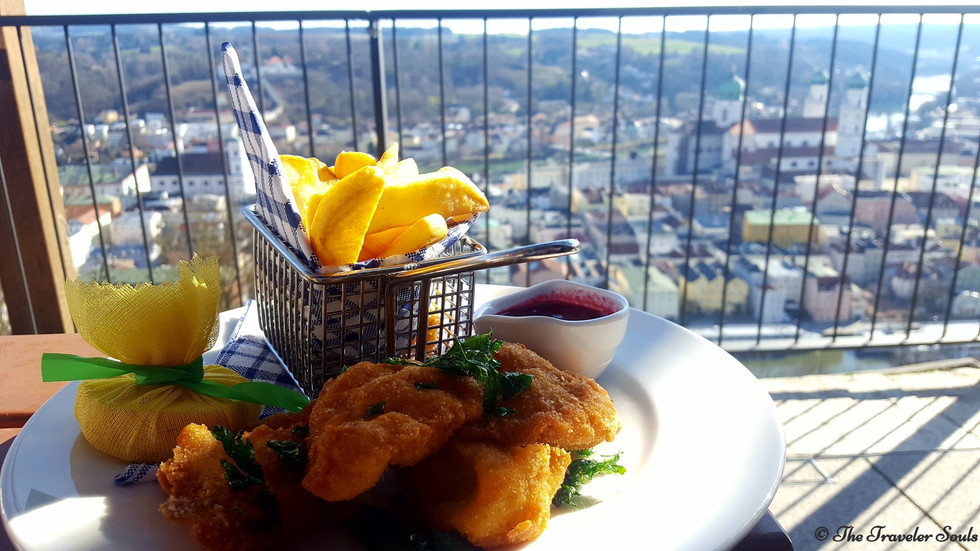Passau, "Venice of Germany"
- Traveler Souls

- Aug 18, 2021
- 4 min read
This time our memories take us to Germany, to a special city, a meeting place of three rivers- Inn, Ilz and the Danube.
Passau, the Bavarian city also known as the Venice of Germany or the City of the Three Rivers, has its origins near the border with wonderful Austria, lending it, as it were, bohemian character, elegance, art and delicacy.
After an unexpected decision - like many of our travel decisions, as we are accustomed to - we arrived in Passau on a weekend. We traveled with one of the representative trains of Germany, belonging to the railway company Deutsche Bahn and we were amazed by the facilities, cleanliness and strict observance of the program. Romanian Railways, train travel lovers invite you to take a look here.
The city had a troubled past, the artistic aspect of the buildings along the three waters arising from a tragedy - a fire in the seventeenth century destroyed a lot of homes, leaving behind ashes and disappointment.
The fire meant, for Passau, not only the mourning of the missing city, but also a chance of an architectural reform that the leaders of that time made abundant use of. Thus, in Bavaria, at that time, the enchanting Baroque style was born, which I observed with pleasure visiting a symbolic objective of the city, namely the Saint Stephen's Dom.
Stepping shyly into the cathedral, the Baroque style helped us enter the past. The undulating movements of the arches, accompanied by religious paintings - playful and plump angels, frowning saints, biblical scenes fused with a background of shades of ultramarine blue - they also made us participants in the stories that unfolded in the paintings in front of us.
To these stories were added, from time to time, streaks of light and shadows through the stained glass windows, dramatizing the scene that the artists laid on the ceiling of the cathedral with such skill.
When we looked back from the altar, on the opposite side of the theatrical location, an imposing organ was looking at us in silence.
The organ of St. Stephen's Cathedral is the largest organ in the world and contains no less than 17,974 organ tubes and 223 registers ("buttons" with which the instrumentalist changes the frequency of musical notes).
A little frightened, but also surprised by the grandeur that unfolded unhindered in front of us, we returned the same look, then leaving the majestic cathedral that still dominates the Old Center of Passau.
Losing ourselves on a few streets in the old area, we cross a bridge over the Danube and head to the Veste Oberhaus Fortress, a complex of medieval buildings now transformed into a museum. It is located in the north of the city, on a hill, but as the hills have the potential of a lookout point, we perched to the top.
There are two main access roads to the fortress - one with a high incline, with an ascent for 15 minutes, as well as a smoother alternative, but longer in duration, namely 25 minutes of ascent.
We fondly remember a scene that happened here. When we were at the intersection of the two roads - the short but painful and the long but bearable - we came face to face with a local, who advised us to choose the first option, because "it's not who he knows what ”, as he made us understand from some hand signs mixed with fragments of German and English. Naive, I believed him and started the difficult climb. After the 15 minutes, which later became 25 and a lot of woods at the slope and the local who left us seriously behind, we reach the fortress.
The instinct of the traveler did not deceive us. The hill gave us a lot of admiration points of the whole Passau.
Although built eight centuries ago, few fortresses in Europe have survived as well as Veste Oberhaus.
Once we bought an access ticket at a price of 5 EUR, we enjoyed a complex exhibition of weapons, armor and archaeological discoveries from the Middle Ages, but also Gothic paintings specific to medieval art.
Towards the end of the visit, we softened not only our interest in culture, but also our hunger, serving food at the fortress's restaurant, open right in a "strategic" viewpoint. From there, we enjoyed Bavarian food and quietly watched the entire course of city life in Passau, a life intertwined with a continuous back and forth of ships on the Danube.
Sweetened with ice cream, but also with the beauty of the Baroque style, we recommend with all the warmth of that April afternoon a visit of at least one day in Venice of Germany.
The two objectives can be admired in one day, but if you want to stay longer, The Traveler Souls has been informed and recommends a few other tourist attractions of the city:
The Glass Museum, totaling a collection of 30,000 Bohemian glass objects, exhibited in over 30 rooms;
Cycling along the Danube;
The town hall, built in the 14th century; in its tower is the largest bell in Bavaria, the tinkling of which you will hear at three times of the day;
Ferry and boat rides on the Danube.
This is where our journey ends, but not before looking once more at Passau through the fortress walls!
If you loved our photos, adventure and article, do not hesitate to write to us.
Share the article:






















Comments